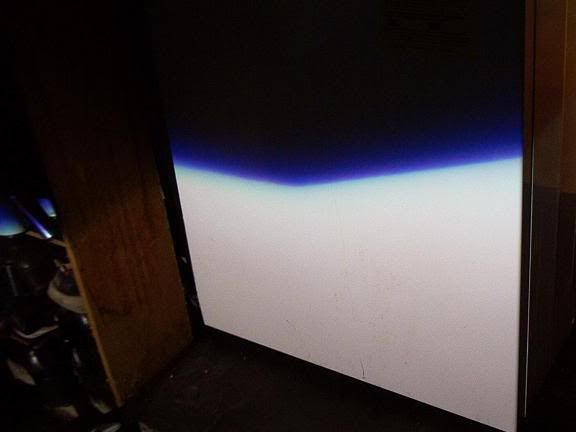I think everyone can pretty much agree that the "blue headlight" craze and the ensuing flooding of the market with halogen bulbs with blue glass started back when the first HID headlights started showing up on premium Euro cars here in the US. The thing I always wondered about was why people always called these lights blue. The temp of OEM HIDs is and has always been 4300K, which is almost pure white. But even I would notice that under some conditions the some OEM HIDs would appear blue at times, and others wouldn't. Then I noticed it was only HIDs in projector lights that had this peculiar blue look at times. Reflector HIDs didn't.
The answer, it seems, comes from the metal shutter that is fixed inside the projector unit to create the sharp horizontal cutoff, which when the lights are aimed properly keeps the intense light below the eye level of oncoming cars. Right at the edge of the cuttoff is a line if blue light. See the photo below. This is caused by refraction of light around the shutter. If the lights are aimed too high so that this cutoff is right in your line of vision, or if due to road conditions this cutoff passes through you line of vision, you are going to see nothing but blue light coming from the headlight.
Since reflector headlights don't use a metal shutter to block light directly at the bulb, you don't get this phenomenon with reflector HIDs.

The answer, it seems, comes from the metal shutter that is fixed inside the projector unit to create the sharp horizontal cutoff, which when the lights are aimed properly keeps the intense light below the eye level of oncoming cars. Right at the edge of the cuttoff is a line if blue light. See the photo below. This is caused by refraction of light around the shutter. If the lights are aimed too high so that this cutoff is right in your line of vision, or if due to road conditions this cutoff passes through you line of vision, you are going to see nothing but blue light coming from the headlight.
Since reflector headlights don't use a metal shutter to block light directly at the bulb, you don't get this phenomenon with reflector HIDs.





